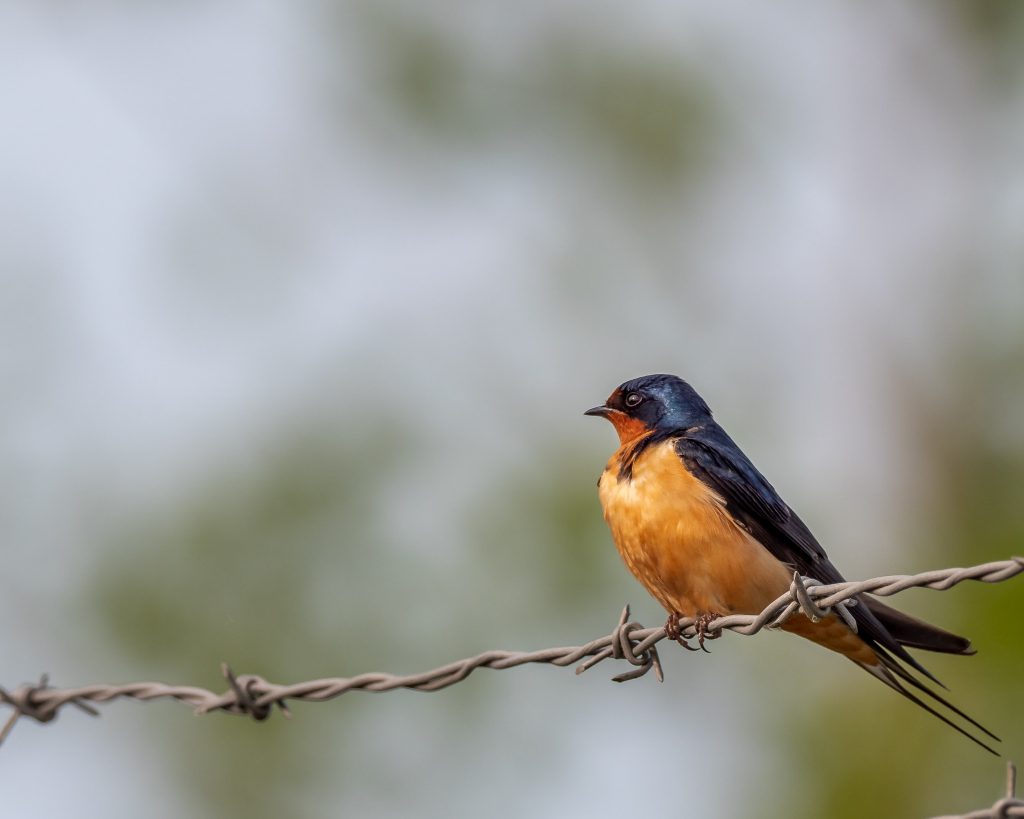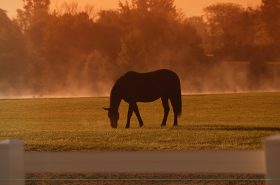In the horse world, spring is synonymous with three things: shedding, sunshine, and the onset of super annoying insects. At least one of those things is pleasant, right!?
However, to deal insects and make barn life altogether easier, you can encourage several different insect-eating species to live nearby. Each of the following critters will naturally cut down on the number of biting flies, mosquitoes, and other nuisance insects that like to hang around your barn and pasture.
Tree Swallows
This bird species primarily feeds on flying insects, including horseflies, mosquitoes, beetles, moths, and grasshoppers, and they can eat hundreds of insects each day.
Tree swallows prefer wet areas and open space, so if you have a stream or pond nearby, you might be in luck. You can also encourage tree swallows to move in by installing birdhouses or specialized gourds. Leaving dead trees with old woodpecker holes intact will provide additional nesting sites.
 Barn Swallows
Barn Swallows
As their name implies, barn swallows prefer to make their nests in barns or other outbuildings. This bird species is naturally attracted to rural, open areas such as pastures or hay fields, and they also like a nearby water source, as they use mud to make their nests.
Barn swallows feed on mosquitoes, various types of flies, grasshoppers, moths, beetles, and other flying insects. To attract them, you can hang artificial nest cups made of wood, clay, or concrete and affixed to a wood backing, as well as nesting shelves in an outbuilding or barn overhang.
Purple martins
This species of bird feeds on beetles, mosquitoes, flies, dragonflies, and moths, and they are known for their communal nesting sites. You can easily purchase or construct a purple martin house or two near your pasture. If you live in the west, martins prefer old woodpecker holes in dead trees. Like swallows, martins also like open areas near a water source.
Fly Predators
Fly predators consist of several small insect species which feed on fly larvae. They don’t bite or sting and often go unnoticed by humans and horses as they do their work. You can purchase fly predators from a company that sells them, and they often arrive in multiple shipments. Early spring is the ideal time to put them out, before fly season takes over. Simply sprinkle fly predators around piles of manure or other rotting organic matter where flies lay their eggs.
Bats
While many people tend to fear bats, they are actually quite helpful to have around the farm. In fact, one bat can eat a pint of mosquitoes every night! Bats prefer warm places to roost like barns and hay sheds, and you can encourage them by installing bat houses around these areas. It’s important to keep in mind that healthy bats don’t bite horses or people and they carry no more chance of having rabies than any other warm-blooded animal.
One important note is that if you want to encourage natural insect predators to live nearby, don’t use pesticides or insecticides. Instead, let these critters do the work for you!



